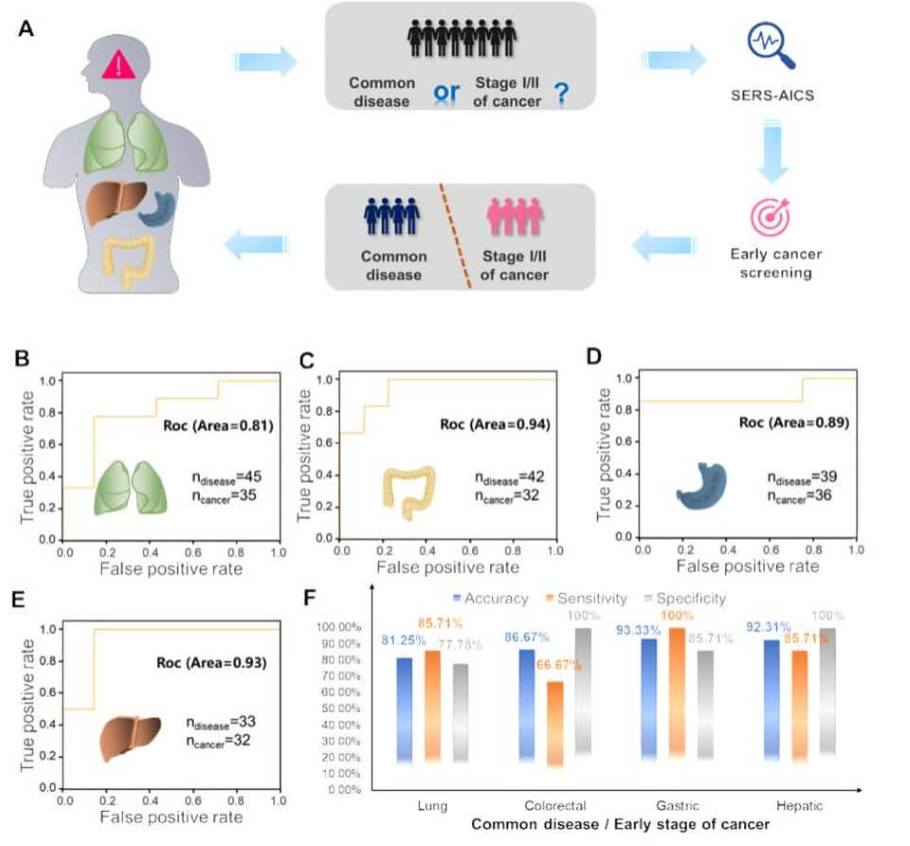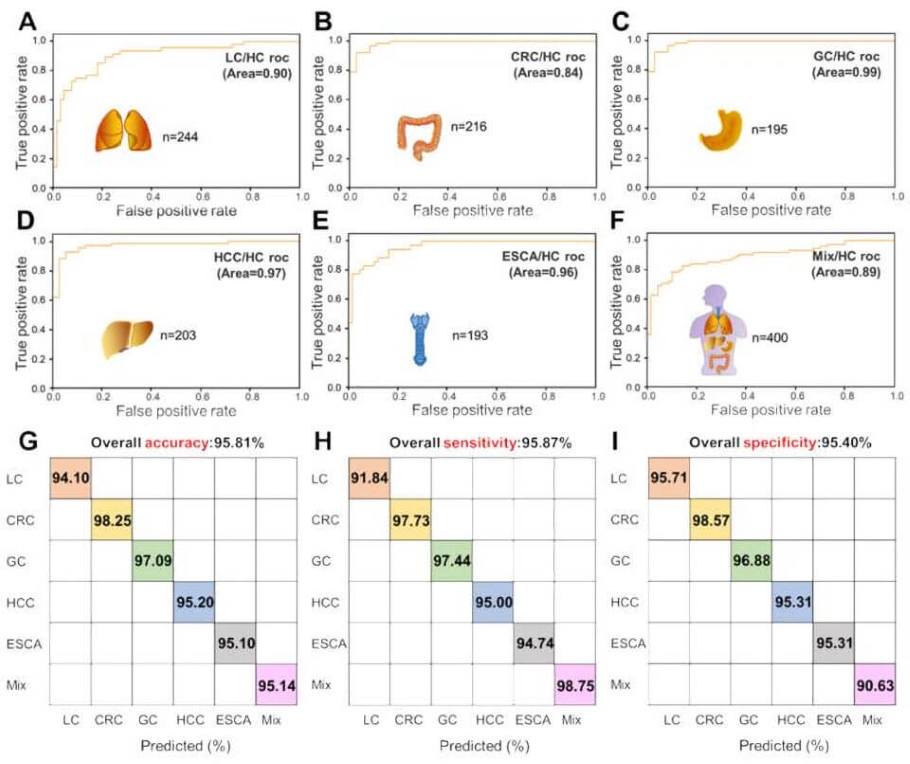Predicting Early Cancer With Molecular Vibration in Serum
Author: Chinese Academy of Sciences
Published: 2023/07/29
Publication Details: Peer-Reviewed, Research Paper
Category Topic: Cancer Treatment - Related Publications
Page Content: Synopsis - Introduction - Main
Synopsis: A team of scientists have taken a significant leap forward by developing a label-free SERS-Artificial intelligence method for cancer screening (SERS-AICS). This technology ingeniously merges the detection strengths of traditional SERS system with the analytical power of advanced big data tool.
Introduction
Cancer, a leading cause of death worldwide is typically diagnosed at an advanced stage when survival rates are low. Most early-stage cancers are asymptomatic, and traditional methods such as imaging or histopathological testing are not feasible as routine screening tests for the general population due to high cost and other clinical constraints.
Main Content
While several surface-enhanced Raman scattering (SERS)-based cancer detection methods have been developed to boast high sensitivity and selectivity, they tend to focus on a single or just a few biomarkers, and often only for a narrow range of cancer types, hampered by an insufficient sample size. Moreover, many researches remain at the preliminary stages lacking data that us easy to interpret and failing to leverage more efficient high-throughput analysis methods.

In a new paper published in eLight, a team of scientists, led by Professor Xiangheng Xiao from College of Physical Sciences, Wuhan University, have taken a significant leap forward by developing a label-free SERS-Artificial intelligence method for cancer screening (SERS-AICS). This technology ingeniously merges the detection strengths of traditional SERS system with the analytical power of advanced big data tool.
The team tested as little as 15ul of patient serum samples with Ag nanowires each for lung, colorectal, hepatic, gastric, and esophageal cancers, capturing the subtle changes in vibrational signals of molecules in cancer samples due to their altered physiology and pathology.

The researchers then trialed and validated their predictive workflow to recognize cancer by analyzing molecular vibrational spectrum from two independent cohorts involving 382 healthy individuals and 1,582 cancer patients. The system demonstrated impressive efficacy with an accuracy of 95.81%, a sensitivity of 95.40% and a specificity of 95.87% overall for five cancer types. Additionally, it was successful in distinguishing samples at an early stage of cancer from those with common diseases, while facilitating the creation of a data platform for more in-depth analysis.
"This was very promising, as early-stage screening should detect changes in molecular fingerprinting information that are intermediate between healthy and disease states," said Prof. Xiao. "And what's truly exciting is that it isn't restricted to one or a just handful biomarkers, but expand to encompass an all-inclusive 'panoramic' view for every single alternative signals in cancers."
"Our study demonstrates the potential for developing a sensitive tool for the early detection of various cancers," Xiao said. "The predictive technique can identify individuals potentially harboring cancer from their blood sample obtained in routine healthy exam. Anyone with suspicious findings would then be referred further evaluation by definitive diagnosis."

In future work, the researchers plan to analyze the spectrum of molecular vibration associated with various clinical characteristics of caner to gain a comprehensive understanding of the disease, potentially aiding in selecting targeted therapies. They also aim to broaden the application of the SERS-AICS method to detect a wider range of cancers and other diseases, promising a transformative step forward in early-state cancer detection and patient monitoring.
Funding Information
This research received funding from the National Natural Science Foundation of China, the Science Fund for Creative Research Groups of the Natural Science Foundation of Hubei Province, the Experimental Technology project of Wuhan University, the Sichuan Science and Technology Program, the Fundamental Research Funds for the Central Universities and medical Sci-Tech innovation platform of Zhongnan Hospital.
Attribution/Source(s): This peer reviewed publication was selected for publishing by the editors of Disabled World (DW) due to its relevance to the disability community. Originally authored by Chinese Academy of Sciences and published on 2023/07/29, this content may have been edited for style, clarity, or brevity.